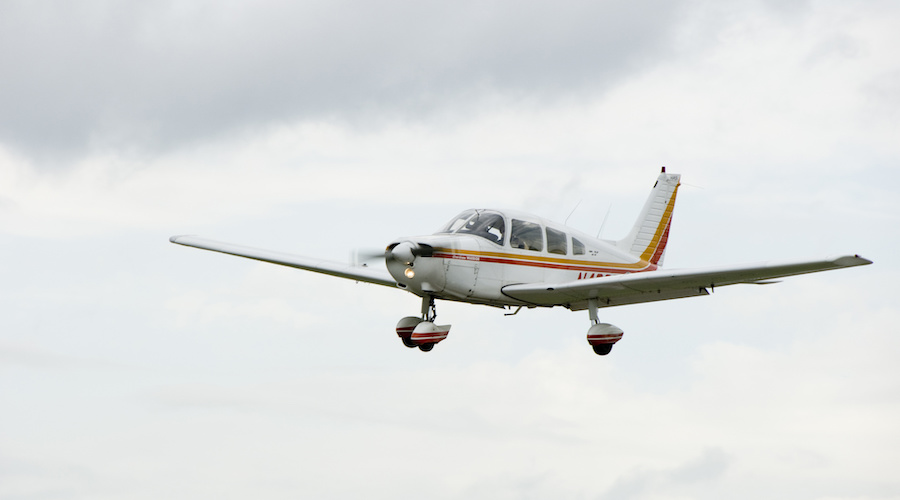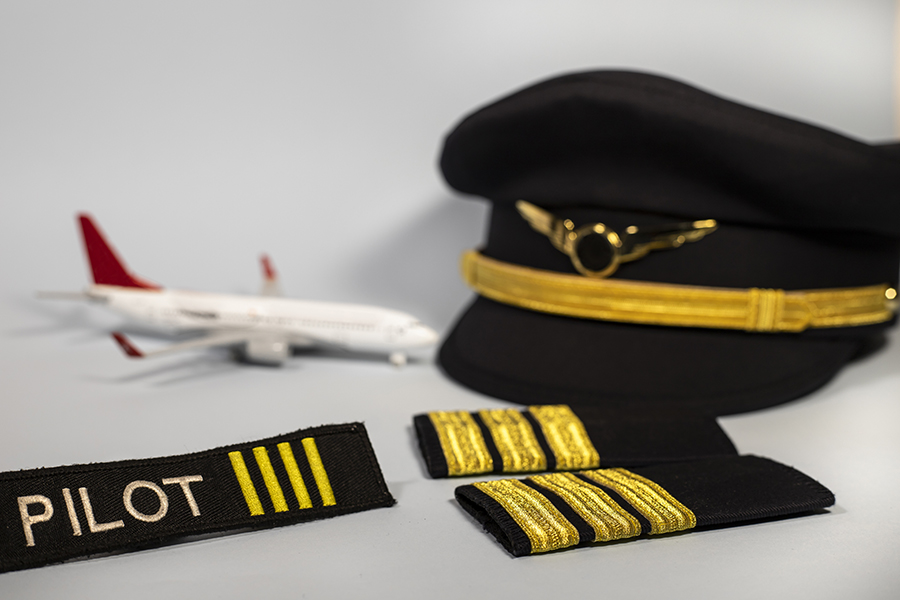-
Why Get an Instrument Rating?
- Poor Visibility, No Problem
- It's Quicker
- Accurate Navigation
- Satisfaction
-
How Hard is it to Learn IFR?
- Reduced Error Tolerance
- Human Factors and In-Flight Illusions
- Different Lost Comms Procedures
- Reading IFR Charts
- Airspace
- IFR Minimums
- Making the '2D' into '3D.'
-
What is Involved in Getting an Instrument Rating?
-
Conclusion
By getting an instrument rating on your license, you open yourself up to many possibilities. You’ll no longer need to worry about the visibility and will be able to navigate with a greater degree of precision and accuracy. Just how hard is it to get an instrument rating? It could be easier than you think. In our article today, we will talk you through the benefits and areas that could be considered ‘hard’.
Getting an instrument rating is challenging yet rewarding. As with any flying qualification, the difficulty level depends on how much theory and practice you undertake. The flight handling is identical to VFR flying. It is easily achievable as long as you know the rules and develop a good scan.
There are many reasons why an instrument rating is highly beneficial. Most pilots should achieve this endorsement with a little time and effort. Here’s what you need to know.
Why Get an Instrument Rating?
You can consider an instrument rating to be the next level in your journey as a pilot. Once VFR becomes second nature, or if you grow tired of being grounded by poor weather, the ability to fly on instruments only can become a really attractive proposition. Here are some great reasons to consider gaining your instrument rating: –
Poor Visibility, No Problem
The main reason most seek an instrument rating is to enable them to legally fly instrument flight rules. Unlike with VFR flying, there are relatively few restrictions regarding the weather you can fly in.
If you’ve got a trip planned, an instrument rating is your insurance against poor weather and visibility.
It’s Quicker
With IFR flying, you can easily navigate from point to point without relying on prominent visual reference points. What’s more, depending on the type of airspace, you might be able to fly higher and faster too!
Accurate Navigation
While it is possible to get really good at VFR navigation, flying on instruments is much more accurate. It is very black and white, either you are on the line, or you aren’t. When flying on instruments, you can pinpoint your location within a few hundred yards.
Satisfaction
There’s something deeply rewarding about taking off straight into cloud, navigating for a few hours without looking outside, and popping out just in front of your destination runway. Flying on instruments is a true skill and is almost like magic to those who see it for the first time.
How Hard is it to Learn IFR?

IFR isn’t hard as such, but it is certainly a challenge.
You really need to be aware of a few things when undertaking an IFR flight. Here are some things you will need to consider.
Reduced Error Tolerance
There’s no hiding when it comes to errors when flying IFR. Whereas flying visually allows you to say, “that’s about right”, you have to be really strict with your limits in IFR. There’s no room to fly ‘around’ 3000ft. You have to fly at 3000ft, exactly.
Others around you will rely on you flying accurately, and you probably won’t see them either. This will be reflected in your final IFR flight test too. You can see the tolerances published by the FAA here.
Human Factors and In-Flight Illusions
For millions of years, the human brain has evolved with a level horizon that you can see. Suddenly, when flying on instruments, that horizon is removed.
What happens next is very unsettling.
Your instruments may tell you one thing, and your brain will tell you another. And you really have to be aware of all the tricks it can pull. Here are some of the things you need to watch out for: –
- The “leans”
- Coriolis Illusions
- Graveyard spins
- Somatogravic illusions
- False Horizons
- Inversion illusions
- Elevator Illusions
- Vertigo
In 99.999% of cases, your instruments will be telling the truth, and you really have to work hard to train your brain to trust them.
Different Lost Comms Procedures
There are special procedures to be followed if you lose communications while flying IFR. And you might not be able to revert back to flying visually.
You can find all the rules detailing lost comms procedures in 14 CFR Part 91.
Reading IFR Charts
IFR charts are slightly different from the VFR charts that you are probably used to. In areas of high traffic density and busy airspace, they can sometimes be very cluttered.
And…
There is a lot of important information hidden. IFR charts contain all of the following, which you’ll need when flying your route: –
- Navigational aids, idents, and frequencies
- Airway designators
- Danger zones and restricted areas
- Airspace classifications
- Special rules
- Minimum safe altitudes (extremely important when you can’t see the ground)
The good news is that you can download IFR charts for free on the FAA website!
Airspace
Once you have an IFR rating, you’ll be permitted into airspace that is regarded as ‘IFR’ only.
Great, right?
However, you will need to be extremely careful. These areas feature some large and seriously fast traffic, so there is no room for error!
What’s more, you may be required to fly according, not to your own wishes, but those of air traffic control! They may give you speed restrictions, divert you and then drop you back further along your route! Or ask you to fly elsewhere based solely on your instrumentation. It isn’t easy!
IFR Minimums
While IFR flying enables you to get airborne in bad weather, some limitations apply.
Such as?
IFR minimums to make an approach.
Different approaches are based on different navigation aids. Depending on their accuracy, there may still be minimum visibilities mandated to allow you to start your approach.
This will be a new concept to you if you are used to flying VFR, and you’ll need to be aware of all of the rules regarding approach minimums by the time you reach your skills test.
Making the ‘2D’ into ‘3D.’
This is perhaps the hardest part about gaining an instrument rating. You literally have to train your brain to make six instruments in two dimensions into a three-dimensional picture.
This isn’t a skill anyone is naturally born with and takes a fair amount of practice.
Here’s the good news.
You don’t have to do all that practice while sitting in an aircraft with the engine running and the dollar bills going out of the back. Online courses offer the ideal training solution, especially if you are new to instrument flying.
What is Involved in Getting an Instrument Rating?
Getting an instrument rating involves a few steps covering theoretical training, practical training, and of course, a final skills test (or ‘check ride’ if you prefer). You can find the detailed requirements in 14 CFR part 61.65.
If you want to read something a little more user-friendly, then why not head over to our dedicated guide on how to get an instrument rating here.
Conclusion
How hard is it to get an instrument rating? Provided you are dedicated and have a good understanding of what is expected, it will be no more challenging than when you first became a pilot. Like all new skills, it will take practice and perseverance, but ultimately, it will all pay off with some hard work. If you haven’t yet embarked on your flight training, why not check out our free guide to becoming a pilot?

 @pilotinstituteairplanes
@pilotinstituteairplanes


